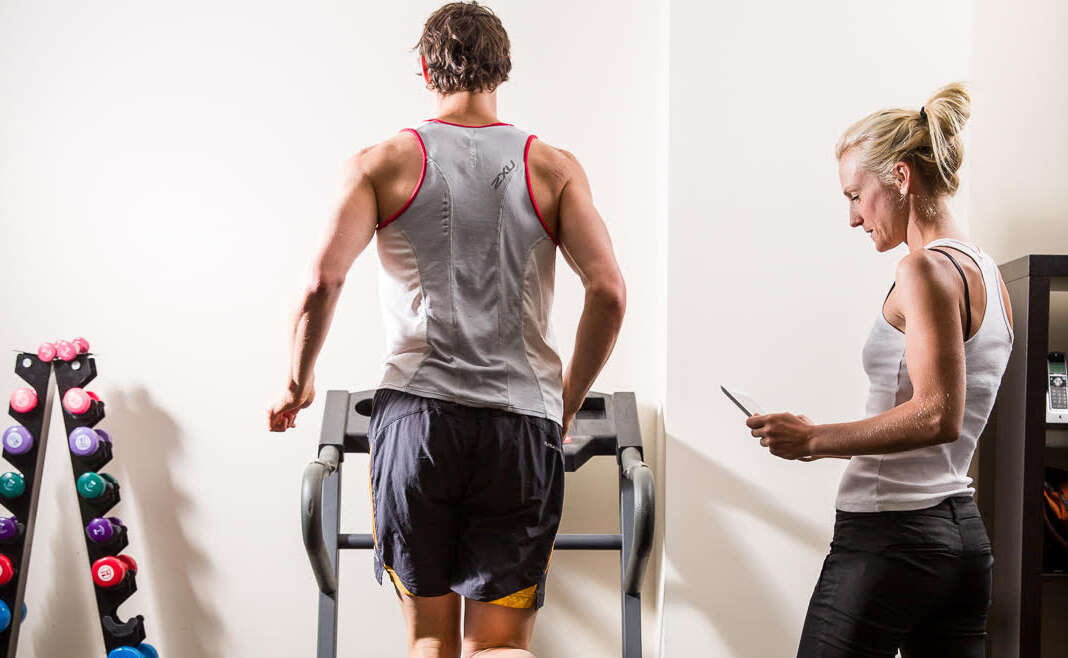In this blog, we will explore what patella tendinopathy is and discuss topics including how the injury occurs, recovery times, management strategies and exercise rehabilitation.
By Dr Shaun Quilty (Osteopath)
What is a Patella Tendinopathy Injury?
Patellar tendinopathy is a common musculoskeletal condition that is characterised by progressive activity-related anterior knee pain and patellar tendon dysfunction. It is highly prevalent in sports involving running and jumping. Hallmark features of the injury include localised pain at the inferior pole of the patella and load-related pain that increases with the demand of knee extensors.
Patellar tendinopathy is primarily a condition that impacts relatively young (15–30 years old) individuals, especially those who participate in activities involving jumping, landing, cutting and pivoting. Patients may complain of pain with prolonged sitting, squatting and the use of stairs. However, these complaints are also common features of other injuries such as patellofemoral pain.
Typically, there is rarely tendon pain present in a resting state. Instead, pain onset usually occurs instantly with loading and ceases once the load is removed. Common risk factors for patellar tendinopathy include tightness in the quadriceps and hamstrings, hyper-pronated feet, being overweight, training on hard surfaces, leg length discrepancies and increased training volume/load. An important feature of all tendinopathies is that they are dose-dependent, hence there is a correlation between increases in load on the tendon and pain.
Recovery Times
The recovery time for patellar tendinopathy is dependent on the classification of the injury and the damage to the patella tendon. For most people, the symptoms of patellar tendinopathy typically clear within 3-6 months of treatment.
In stages 1 and 2, usually within the first 3 weeks of treatment there are significant improvements noted with conservative treatment. Whilst stages 3 and 4 will require a longer timeframe for the tendon to heal, potentially requiring long-term lifestyle and activity modification.
In some cases, surgery may be necessary to repair the damaged tendon, which can significantly extend the recovery time.
Classification:
Stage 1: A dull ache or pain after activity only, without any functional impairment to performance.
Stage 2: Localised pain that occurs during and after activity, without any functional impairment to performance.
Stage 3: Prolonged pain during and after activity, with impacted functional performance.
Stage 4: Complete tear of the patella tendon, thus the knee is unable to function properly.
Management Strategies
Treatment of patella tendinopathy is primarily managed through conservative management strategies, ultilising exercise rehabilitation to appropriately load the injured tendon. A fundamental aspect involved in the management of patellar tendinopathy is the assessment of pain irritability, thus this can be monitored through jumping and hopping examinations.
Eccentric squatting exercise programs are the key focus of management, aiming to reduce pain and improve functionality by concentrating load on the patellar tendon. Other treatment methods used include rest, activity modification, anti-inflammatory medication, taping and surgery if severe intervention is required.
In addition, strengthening muscle imbalances involving the hamstring and quadricep muscles to correct biomechanics during walking, running and jumping activities.
Exercise Rehabilitation
Exercise rehabilitation is a crucial aspect involved in the recovery of patella tendinopathy. The main aim of rehabilitation is to develop load tolerance within the patella tendon by addressing pain reduction initially, followed by progressive loading.
Thus, utilising an eccentric exercise program focusing around a variety of squat progressions is key to recovery and is one of the more effective intervention strategies. For example, performing 3 sets of 15 repetitions of a single-leg eccentric squat (twice daily).
Contact our friendly Osteo team at MOSIC to find the ideal recovery for your knee pain. We can help you prevent or recover from your knee pain.


